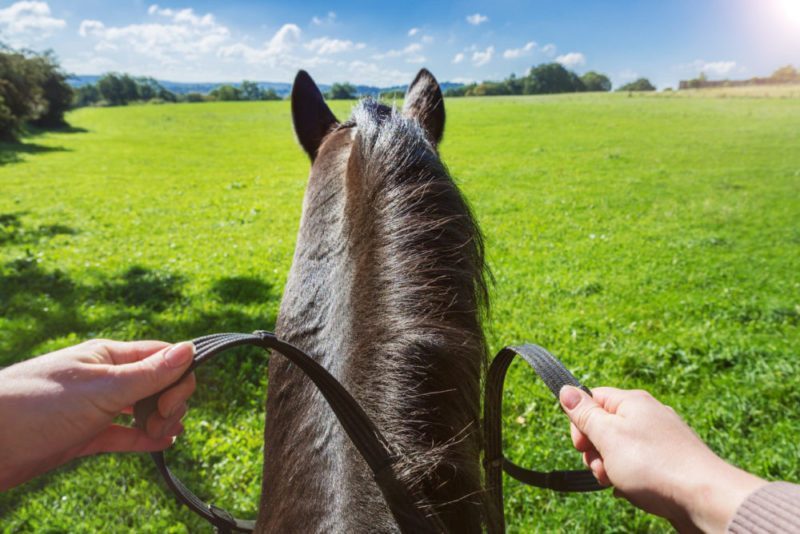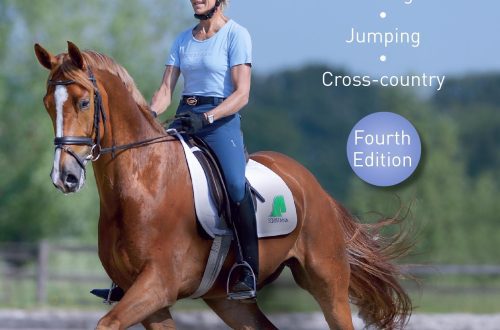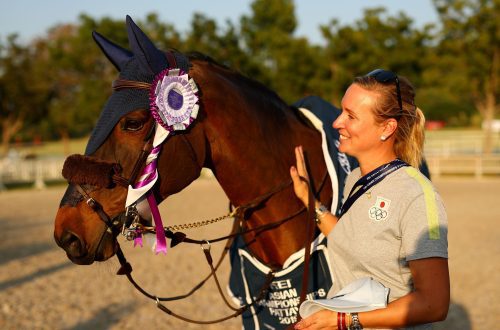
Visualization: equestrian training without a horse

Photo from equinewellnessmagazine.com
Improving riding skills without sitting in the saddle is the dream of almost every athlete, right? How is this possible? The answer is simple – visualization.
Alison Lincoln, a rider, writer and graduate in horseback riding, talked about how to use visualization to improve your equestrian skills.
It’s worth starting with the very concept of “visualization“. It involves using all the senses to create or re-create a situation in the mind. Research has shown that when we visualize particularly vivid images and situations, our brain perceives it as an event occurring in reality.
Therefore, the use visualization is perfect for honing skills. Repeating drills, situations, and elements in your mind over and over again will help the rider memorize the skill and thereby avoid long and tedious repetition on horseback.
Alison points out that constant practice and recreating a certain feeling through visualization will help the rider “catch” him more quickly when he is in the saddle. But before that, make sure you have a clear idea of what you want to do. You must know how the action should be performed correctly.whether aids are required for this and how the horse should respond in response. And only after that you can proceed to the visualization itself.
For example, when you want to practice leg yield, remember the whole sequence of actions: how to position your hands with the outside and inside reins, how your legs should work, and how to correctly distribute your own weight in the saddle. Next, move on to visualization. Start by imagining how to get the horse into the corner before the start of the element, then adjust your position in the saddle and try to feel the movement of your horse. After that, proceed to the element itself. Pay attention to how the horse is bent, how much it moves sideways. After mentally completing the exercise, repeat it on the other side.
This approach assumes that your horse is already familiar with leg yielding. But if you are just starting to teach her this element, then think about how break the exercise into small fragments and visualize them separately. What commands will you give the horse? How will you show her that she is on the right track? How do you finish the element?
Worth spending time on visualization of an incorrectly executed command so you’ll be ready to fix it. After all, the clearer the rider thinks, the more accurate his commands, the easier it is for the horse to understand him.
Visualization is also suitable if you have problem while riding. Whatever it is, you can think about it and mentally imagine several solutions.
For example, if you know that your horse on the route is trying to take you to the left when jumping or is frightened by posters in the arena, “rehearse” these situations in your head. Imagine how you will deal with them. This is necessary so that you are ready to correct the error as soon as it occurs.
Tournament preparation
In anticipation of the competition mentally recreate a dressage or obstacle course. First, imagine that you are watching all your actions from the side, like on a video. And then, when you don’t have to think about what will happen next, visualize your performance in detail, imagining that you are on horseback moving in real time. This implies that you see the field or track with your own eyes.
Error correction
After a bad start or workout, try visualize a positive outcome. Mentally “correct” your mistakes and analyze what could have been done differently.
Remember that in order to be able to visualize your own workouts, you need to practice. Here are some tips for developing this skill:
- Memorize key words to recreate the moment (for example, the coach’s commands “sit up straight”, “shoulders straight”);
- Avoid playing too fast or too slow when rendering;
- Reach out to all your senses as you recreate the moment.
And remember, like any other skill, imagination needs training. Spend at least 5 minutes visualizing every day. Regular “mental training” will help not only remember the exercises, but also carefully work out all the shortcomings.





